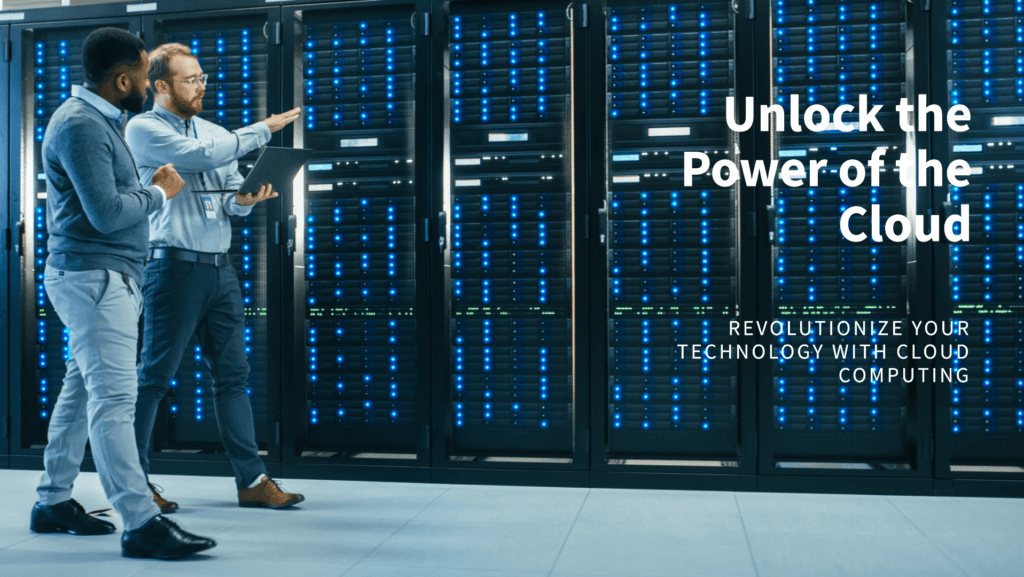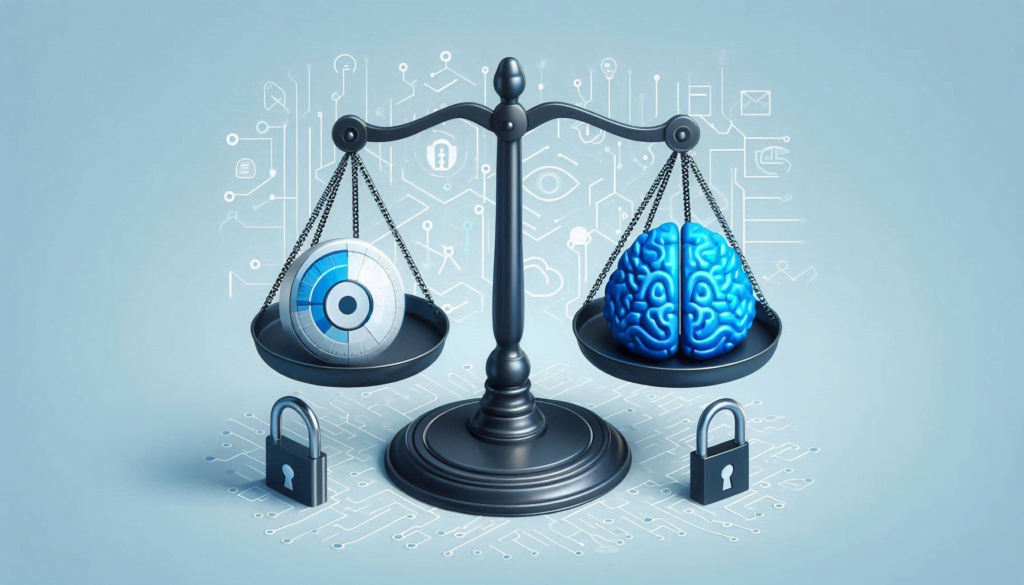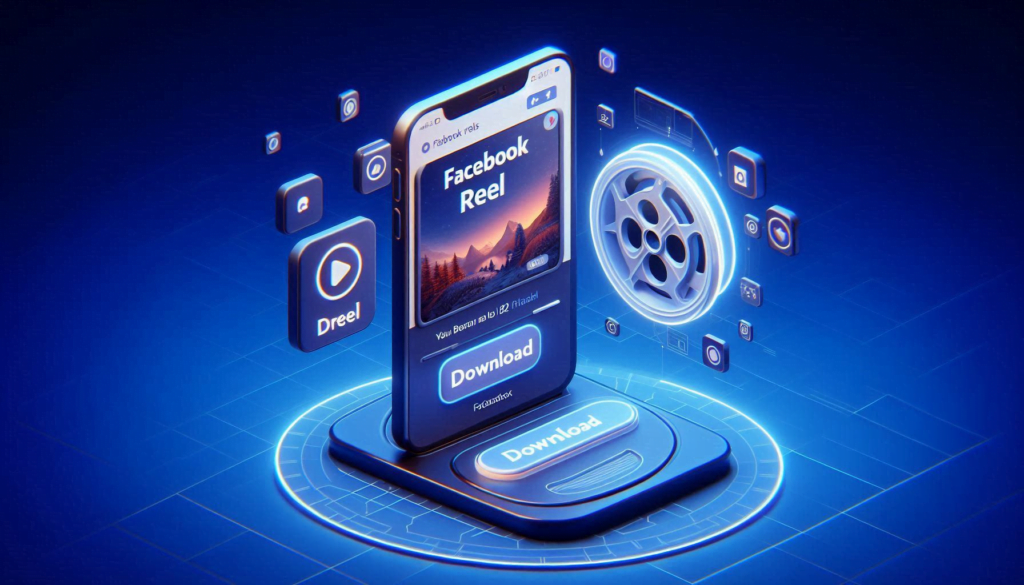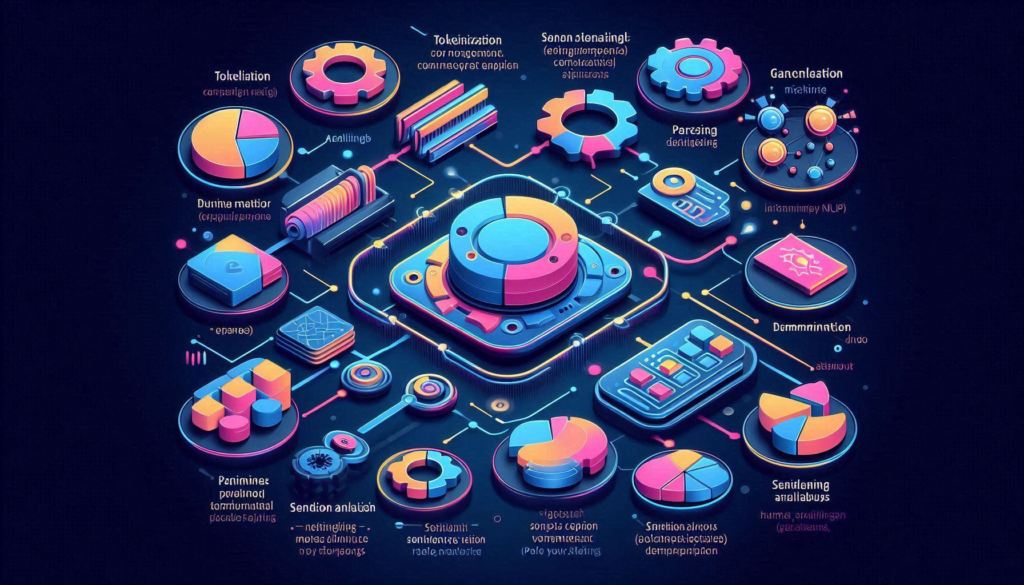Welcome to Technology Moment, where innovation meets opportunity. In today’s data-driven world, the Internet of Things (IoT) stands as a cornerstone of digital transformation. But here’s the twist—simply collecting data isn’t enough. The real magic lies in IoT data analytics, the process that transforms raw numbers into actionable insights.
Whether you’re looking to streamline operations, predict customer behavior, or uncover new revenue streams, leveraging IoT data analytics can propel your business into a new era of growth. Join us as we dive deep into the techniques, platforms, and strategies that unlock the full potential of IoT data for businesses of all sizes. The future is connected—are you ready to grow with it?
What is IoT Data Analytics?
IoT Data Analytics is the process of collecting, processing, and analyzing data generated by Internet of Things (IoT) devices. These devices, which include sensors, cameras, and smart appliances, continuously produce vast amounts of data as they interact with the environment or perform tasks. This data, when analyzed, provides valuable insights into operational efficiencies, customer behaviors, and market trends.
For instance, think about smart home devices like thermostats and lighting systems. They generate data on usage patterns, which can be analyzed to optimize energy consumption. Now, imagine scaling this concept to businesses—everything from manufacturing plants to retail chains—where IoT devices can revolutionize operations.
Importance of IoT in Modern Businesses
The role of IoT in businesses today is transformational. With IoT, businesses can collect data directly from their operations, products, and customers in real-time. This data, when paired with analytics, allows for:
- Enhanced Decision-Making: Instead of relying on assumptions or outdated reports, IoT data analytics provides up-to-the-minute insights, enabling leaders to make informed and precise decisions.
- Operational Efficiency: Companies can identify inefficiencies in processes and fix them promptly, reducing costs and wastage.
- Customer-Centric Strategies: By understanding customer behavior and preferences through IoT data, businesses can tailor products and services, creating a more personalized experience.
- Competitive Edge: In a data-driven world, companies leveraging IoT analytics are better equipped to anticipate market trends, stay agile, and outperform competitors.
IoT data analytics is not just about managing data; it’s about transforming this data into actionable insights that drive business growth. It bridges the gap between raw data and strategic decisions, making it indispensable for businesses aiming to thrive in a competitive and fast-evolving marketplace.
By understanding IoT data analytics and its importance, businesses are setting the foundation for innovative growth and sustainable success. Whether it’s through improving customer satisfaction, optimizing internal processes, or staying ahead of industry trends, IoT analytics is the key to unlocking new opportunities.
Table of Contents
Understanding IoT Data Analytics
The Basics of IoT Data Generation
The Internet of Things (IoT) refers to the interconnected network of devices, sensors, and systems that collect and exchange data over the internet. These devices—ranging from smart home gadgets to industrial machinery—continuously generate massive amounts of data. This data includes everything from temperature readings and motion detection to operational logs and user preferences.
For businesses, this raw data holds valuable insights, but extracting meaningful information requires advanced analytics techniques. IoT data analytics is the process of collecting, organizing, and analyzing this data to uncover actionable insights that drive decision-making.
Why Data Analytics is the Backbone of IoT
Without data analytics, the IoT ecosystem would be like a library without a catalog: an overwhelming repository of information without any way to make sense of it. Analytics transforms raw data into patterns, predictions, and insights that businesses can act upon. Here’s how analytics strengthens the IoT framework:
1. Simplifying Data Overload
IoT devices produce data in real time, often resulting in terabytes of information daily. Analytics tools streamline this complexity by filtering out irrelevant data and focusing on actionable metrics.
2. Enabling Decision-Making in Real Time
IoT analytics provides real-time insights that empower businesses to make immediate, data-driven decisions. For example, predictive maintenance systems in manufacturing use analytics to detect anomalies and prevent equipment failures.
3. Unlocking Hidden Patterns and Trends
Retailers, for instance, can analyze customer foot traffic data to optimize store layouts and improve sales.
4. Enhancing Automation
Many IoT systems rely on analytics to automate processes. For example, smart thermostats use data analytics to learn user preferences and automatically adjust temperatures, improving energy efficiency.
Key Components of IoT Data Analytics
To fully understand IoT data analytics, it’s essential to know its core components:
- Data Collection: IoT devices gather data from sensors, cameras, or embedded systems. This data is then sent to a central repository, such as the cloud.
- Data Storage: Due to the volume of data generated, scalable storage solutions like cloud platforms or distributed databases are crucial.
- Data Processing: Once collected, data is processed using advanced algorithms to clean, organize, and prepare it for analysis.
- Data Analysis: Using techniques like machine learning, real-time processing, and statistical models, businesses can uncover insights that directly impact operations.
- Data Visualization: Clear visual representations, like dashboards and graphs, help stakeholders understand complex data at a glance.
Types of IoT Data Analytics
The way this data is processed and interpreted depends on the analytical methods employed. Below, we break down the main types of IoT data analytics, explaining their roles and significance in driving business growth.

1. Real-Time Analytics
Definition:
Real-time analytics involves processing data as it is generated by IoT devices, delivering immediate insights that can drive quick decision-making.
How It Works:
IoT devices, such as sensors and cameras, constantly generate data. Real-time analytics platforms process this data instantaneously, often using technologies like in-memory computing and event-stream processing.
Applications:
- Smart Cities: Traffic monitoring systems use real-time analytics to manage congestion dynamically.
- Healthcare: Wearable devices alert doctors about irregular patient vitals in real time.
- Retail: Tracking customer movements in stores to offer personalized experiences.
Benefits:
- Enables quick responses to operational changes.
- Reduces downtime by identifying issues as they occur.
2. Predictive Analytics
Definition:
Predictive analytics uses historical data and machine learning models to forecast future trends, risks, and opportunities.
How It Works:
IoT devices collect data over time, creating a repository of historical patterns. Predictive models analyze these patterns to predict outcomes like equipment failures or market trends.
Applications:
- Manufacturing: Predicting machinery breakdowns to plan maintenance schedules.
- Energy Sector: Anticipating power grid surges to optimize distribution.
- Supply Chain: Forecasting demand to adjust inventory levels.
Benefits:
- Improves planning and resource allocation.
- Reduces unexpected operational disruptions.
3. Edge Computing Analytics
Definition:
Edge computing analytics processes data at or near the source—such as the IoT device itself—rather than sending it to a centralized cloud server.
How It Works:
By using edge devices equipped with processing power, data is analyzed locally. This minimizes latency and reduces the need for constant internet connectivity.
Applications:
- Autonomous Vehicles: Processing sensor data locally for quick navigation decisions.
- Agriculture: Analyzing weather and soil conditions directly in smart farming equipment.
- Industrial IoT: Monitoring production lines for immediate quality control.
Benefits:
- Faster decision-making due to reduced latency.
- Enhanced data security as less information is transmitted over networks.
4. Machine Learning and IoT
Definition:
Machine learning (ML) in IoT analytics involves training algorithms to identify patterns, detect anomalies, and make recommendations autonomously.
How It Works:
ML models are fed IoT data to “learn” patterns and behaviors. Over time, these models improve their accuracy in predicting outcomes or recognizing anomalies.
Applications:
- Healthcare: Diagnosing conditions based on wearable device data.
- Retail: Offering personalized product recommendations through smart shelves or apps.
- Logistics: Optimizing delivery routes based on historical traffic data.
Benefits:
- Automates complex decision-making processes.
- Continuously adapts to evolving data trends.
Key Takeaways on IoT Analytics Types
Each type of IoT data analytics serves unique business needs. Real-time analytics is ideal for immediate insights, predictive analytics helps prepare for the future, edge computing enhances speed and security, and machine learning brings intelligent automation. Businesses should evaluate their goals and IoT setup to choose the right mix of these analytics methods to maximize value from their data.
Key Techniques in IoT Data Analytics
IoT data analytics transforms raw data generated by devices into actionable insights. However, managing the massive amount of data from IoT devices requires a systematic approach. Below are the key techniques businesses use to unlock the full potential of IoT data analytics:
1. Data Cleaning and Integration
- Why It Matters: IoT devices often generate unstructured, noisy, or redundant data. Ensuring the data is accurate and consistent is critical for meaningful analysis.
- The Process:
- Data Cleaning: For example, normalizing temperature data recorded in different units.
- Data Integration: Aggregating data from multiple devices and sources into a centralized system for cohesive analysis. For instance, integrating data from sensors, cameras, and weather stations in a smart city project.
- Benefits: Clean and integrated data leads to more reliable analytics and better insights.
2. Visualization Techniques
- Why It Matters: IoT data can be overwhelming due to its volume and complexity. Visualization helps stakeholders understand trends and anomalies without diving into raw data.
- Popular Methods:
- Dashboards: Real-time dashboards provide live updates, ideal for monitoring industrial machinery or smart home systems.
- Graphs and Charts: Line graphs for tracking trends, bar charts for comparisons, and heatmaps for geospatial data.
- 3D Models: Used in sectors like healthcare and construction to represent spatial or anatomical data.
- Example: A logistics company using heatmaps to identify traffic patterns and optimize delivery routes.
3. Pattern Recognition
- Why It Matters: IoT devices continuously monitor environments, and recognizing patterns allows businesses to predict behaviors and identify anomalies.
- How It Works:
- Using algorithms to detect recurring trends, such as peak energy usage in a factory.
- Identifying outliers that signal issues, like a sudden temperature spike in a cooling system indicating a potential malfunction.
- Applications:
- Preventative Maintenance: Recognizing patterns that precede equipment failure.
- Consumer Insights: Identifying buying trends from IoT-enabled retail systems.
4. Advanced Analytical Techniques
- Machine Learning Algorithms:
- Enable IoT systems to learn from historical data, predict outcomes, and improve decision-making. For example, using ML to predict equipment failures in predictive maintenance.
- Statistical Modeling:
- Quantitative analysis of IoT data to uncover relationships and dependencies. For instance, modeling how weather impacts smart grid performance.
- Edge Computing Analytics:
- Analyzing data directly at the IoT device or edge node, reducing latency and bandwidth use. This is critical for applications like autonomous vehicles or real-time health monitoring.
5. Context-Aware Analytics
- Why It Matters: IoT data gains meaning when analyzed within its context.
- How It Works: Incorporating environmental factors (e.g., time, location, user preferences) into analytics to improve relevance.
Platforms for IoT Data Analytics
Platforms for IoT data analytics are the technological backbone that enables businesses to collect, process, analyze, and derive insights from the massive amounts of data generated by IoT devices. Choosing the right platform is crucial for transforming raw data into actionable insights and unlocking business growth. Let’s dive deeper into the two main types of platforms used in IoT data analytics:
Cloud-Based Platforms
Cloud-based IoT analytics platforms operate on cloud infrastructure, providing scalable, flexible, and remote solutions for data processing and analysis.
Features of Cloud-Based Platforms:
- Scalability: These platforms can handle massive datasets, making them ideal for businesses that anticipate rapid growth in IoT data.
- Real-Time Processing: Many cloud-based solutions support real-time data processing, ensuring businesses can act on insights as they emerge.
- Integration with AI and ML Tools: These platforms often come equipped with artificial intelligence (AI) and machine learning (ML) integrations to enhance predictive analytics.
- Accessibility: Data and analytics tools are accessible from anywhere with an internet connection, making it easier for global teams to collaborate.
Popular Cloud-Based IoT Analytics Platforms:
- AWS IoT Analytics: Offers seamless integration with other AWS services, enabling comprehensive analytics and machine learning capabilities.
- Microsoft Azure IoT Hub: Focuses on real-time analytics and predictive insights, particularly suited for enterprise needs.
- Google Cloud IoT Core: Provides data visualization and integration with Google’s ML and AI tools for enhanced analytics.
Benefits of Cloud-Based Platforms:
- Cost-Effectiveness: Pay-as-you-go pricing models reduce upfront costs.
- High Availability: Ensures uptime and reliability, even during peak data loads.
- Automation: Simplifies processes such as data ingestion, cleaning, and visualization.
Challenges:
- Latency Issues: Although rare, cloud-based platforms can experience delays due to network dependency.
- Data Privacy Concerns: Sensitive data being stored on third-party servers can pose security risks.
On-Premises Platforms
On-premises IoT analytics platforms are hosted and managed within an organization’s infrastructure. These platforms are particularly favored by industries requiring strict data security and control.
Features of On-Premises Platforms:
- Data Ownership: All data remains within the organization, providing maximum security and control.
- Customization: These platforms are highly customizable to meet specific business needs.
- Low Latency: Processing data locally eliminates the latency associated with cloud-based platforms.
Popular On-Premises IoT Analytics Platforms:
- IBM Watson IoT Platform (On-Premise Version): Delivers robust analytics capabilities tailored for industrial IoT applications.
- Siemens MindSphere: Provides advanced data processing tools for manufacturing and automation industries.
- GE Predix: Aimed at industrial IoT, offering comprehensive analytics for monitoring equipment performance.
Benefits of On-Premises Platforms:
- Enhanced Security: Ideal for organizations in regulated industries such as healthcare, finance, or government.
- Reliability: Operates independently of internet connectivity, ensuring uninterrupted analytics.
- Compliance: Simplifies adherence to data regulations, as data never leaves the organization’s infrastructure.
Challenges:
- High Upfront Costs: Initial investments in hardware, software, and maintenance can be substantial.
- Complex Deployment: Setting up and maintaining on-premises platforms can be technically challenging.
Choosing the Right Platform
The choice between cloud-based and on-premises platforms depends on various factors, including the nature of the business, data security requirements, budget, and scalability needs.
- Cloud-Based Platforms are perfect for startups, small businesses, or those with dynamic data requirements.
- On-Premises Platforms are ideal for industries with stringent security and compliance demands, such as healthcare, finance, or defense.
By selecting the right IoT analytics platform, businesses can unlock the full potential of IoT data, streamline operations, enhance customer experiences, and ultimately drive growth.
Benefits of IoT Data Analytics for Businesses
By harnessing the vast amount of data generated by interconnected devices, organizations can gain actionable insights that drive efficiency, innovation, and growth. Let’s delve into the key benefits of leveraging IoT data analytics for business success:

1. Operational Efficiency
- Predictive Maintenance: By analyzing data from sensors on equipment, businesses can predict potential failures before they occur. This reduces downtime, maintenance costs, and disruptions to operations.
- Resource Optimization: IoT data can track energy consumption, inventory levels, and other operational metrics, helping businesses allocate resources more effectively and reduce waste.
- Automation: IoT data analytics often integrates with automation systems, allowing businesses to trigger real-time actions, such as adjusting manufacturing processes or updating supply chain logistics.
2. Enhanced Customer Experience
This knowledge is instrumental in delivering a superior customer experience.
- Personalization: Businesses can analyze data from connected devices, such as smart home products or wearable tech, to tailor services and products to individual needs.
- Proactive Support: IoT analytics can detect issues before the customer notices them, enabling businesses to offer proactive solutions. For example, a smart appliance manufacturer could alert users to potential problems and schedule repairs automatically.
- Improved Service Delivery: Retailers, for instance, can use IoT to manage inventory in real-time, ensuring popular products are always in stock.
3. New Revenue Streams
IoT data analytics opens doors to innovative revenue-generating opportunities. Businesses can leverage data insights to create value in previously untapped ways.
- Data Monetization: Businesses can aggregate anonymized data from IoT devices and sell it to third-party companies for market research and other purposes.
- Product Enhancements: Analytics can reveal how customers use products, guiding improvements or the development of new features that address unmet needs.
- Service-Based Models: IoT analytics supports the transition from product-based to service-based offerings. For example, a manufacturer could shift to a subscription-based model where customers pay for usage rather than ownership.
4. Competitive Advantage
In today’s data-driven world, the ability to leverage IoT analytics can set businesses apart from their competitors.
- Faster Decision-Making: With real-time analytics, businesses can respond to market trends and customer needs more quickly than competitors.
- Insight-Driven Strategy: IoT data provides actionable insights that inform strategic decisions, from product development to market expansion.
- Differentiation: Businesses that adopt IoT analytics can offer unique, data-driven solutions that stand out in their industry.
5. Enhanced Safety and Compliance
IoT data analytics also helps businesses improve safety and meet regulatory requirements.
- Workplace Safety: Sensors in industrial settings can monitor environmental conditions, equipment performance, and worker health, reducing the risk of accidents.
- Regulatory Compliance: IoT analytics provides detailed records and insights that make it easier to comply with industry-specific regulations, such as environmental standards or health protocols.
Challenges in Leveraging IoT Data Analytics
While IoT (Internet of Things) data analytics presents exciting opportunities for businesses, there are several challenges organizations face when trying to leverage this powerful tool. These challenges can affect the accuracy, efficiency, and security of the data analytics process, making it crucial for businesses to plan and address them adequately. Below are the main challenges:
1. Data Privacy and Security Concerns
The sheer volume of data generated by IoT devices means businesses must deal with sensitive information regularly. IoT devices, whether it’s a smart thermostat, wearable health device, or industrial machinery, collect vast amounts of data that could potentially contain personal, financial, or operational information. This raises significant privacy and security concerns:
- Data Breaches: If IoT devices are not securely connected or configured, they become vulnerable to cyberattacks.
- Regulatory Compliance: Organizations must also comply with data protection regulations such as GDPR (General Data Protection Regulation) or HIPAA (Health Insurance Portability and Accountability Act) depending on the industry. These regulations dictate how data should be handled, stored, and transferred, and non-compliance can result in hefty fines.
To mitigate these risks, businesses must invest in robust encryption methods, regular security audits, and secure authentication systems to protect the data from unauthorized access.
2. Handling Large Volumes of Data
While this data is valuable, the sheer volume can become overwhelming, making it difficult to store, process, and analyze effectively. Some of the challenges include:
- Storage Constraints: The massive amounts of data generated by IoT devices need to be stored in a way that is both secure and accessible. Traditional databases might struggle to handle the continuous influx of data, leading businesses to invest in specialized storage systems such as cloud-based platforms, which may increase costs.
- Data Processing Overload: Processing large volumes of data in real-time, especially when trying to derive actionable insights instantly, can strain processing capabilities. IoT data often comes in diverse formats, making integration and analysis more complex. For example, data from sensors might need to be processed in parallel across different platforms.
- Data Latency: To maximize the benefits of IoT data analytics, it’s essential to analyze data quickly. However, transferring large data volumes to centralized servers can lead to delays, or latency. This can be particularly problematic in scenarios where immediate action is required, such as monitoring factory machines for malfunctions or analyzing health vitals from a wearable device.
To handle these issues, businesses often need to invest in more scalable data processing solutions, such as edge computing, where the data is processed closer to the source (e.g., IoT devices themselves), thus reducing delays and the burden on centralized data systems.
3. Interoperability Between Devices and Platforms
One of the key characteristics of IoT is the diversity of devices involved—each with its own protocols, data formats, and communication standards. This diversity can pose interoperability challenges, particularly when data is being collected from a wide range of devices that don’t natively “speak the same language.” For instance:
- Device Compatibility: IoT devices from different manufacturers may not seamlessly integrate with each other. Some devices might use proprietary protocols, while others use open standards, creating compatibility issues.
- Data Standardization: Data collected from various devices can vary widely in format and structure, making it difficult to standardize and analyze in a uniform way. Without standardization, businesses may find it harder to derive meaningful insights across different types of data.
Organizations need to address these issues by adopting IoT platforms and software solutions that support integration, such as middleware that connects and manages diverse devices. These solutions ensure that data can be unified for processing, regardless of the underlying technology.
4. Complexity in Analyzing Unstructured Data
Unstructured data, such as images, videos, and sensor readings, can be difficult to analyze effectively. For instance, data from industrial machinery sensors might include temperature, vibration, and pressure readings, but also raw image data from cameras or microphones used for quality control.
- Extracting Meaning from Raw Data: Unstructured data requires advanced analytics techniques like machine learning and artificial intelligence (AI) to make sense of it. For example, using AI to recognize patterns in sensor data or image data from cameras can be a time-consuming process, requiring high-quality algorithms and computing power.
- Integration with Structured Data: Combining unstructured data with structured data (such as time-series data) adds another layer of complexity. Analyzing data that exists in different formats, from textual logs to numeric sensor readings, requires specialized tools and methodologies to integrate and interpret effectively.
To handle unstructured data effectively, businesses can invest in machine learning tools, AI models, and data processing platforms that specialize in working with different types of data, ensuring that both structured and unstructured data can be processed together for deeper insights.
5. Real-Time Decision Making Challenges
IoT data analytics often requires real-time processing to derive insights quickly enough to make timely decisions. However, achieving real-time decision-making at scale is not always feasible. Some challenges include:
- Computing Power: Real-time analytics demands significant computing resources. As the volume of IoT data increases, businesses might need to scale their infrastructure to meet these demands, which can lead to higher costs.
- Accurate and Timely Insights: Making accurate decisions based on real-time data requires precise models and tools that can analyze the data in a fraction of a second. This is particularly critical in industries like manufacturing, where production downtime or equipment failure could result in huge losses.
- Network Limitations: IoT devices are often distributed across different locations, with varying network speeds and reliability. This can impact the ability to collect and analyze data in real-time, especially in remote areas where internet connectivity is unreliable.
To overcome these challenges, companies often rely on edge computing, which processes data closer to the source, reducing the need to transmit large volumes of data to a central server and enabling faster decision-making. Moreover, AI-driven automation can aid in decision-making by suggesting optimal actions based on real-time insights.
Strategies to Effectively Use IoT Data Analytics
Successfully leveraging IoT data analytics requires a strategic approach to ensure businesses can extract meaningful insights and drive growth. IoT data, by its nature, is vast, complex, and can be overwhelming without proper organization and focus. Implementing the right strategies can help businesses unlock the full potential of IoT data, leading to better decision-making, operational efficiencies, and new opportunities. Here are some key strategies to effectively use IoT data analytics:
1. Invest in Robust IoT Infrastructure
One of the first steps in implementing IoT analytics is ensuring that you have a strong IoT infrastructure in place. This infrastructure serves as the foundation for collecting, storing, and processing data. A well-designed IoT infrastructure should include:
- High-quality sensors and devices: Ensure that the devices collecting the data are reliable and accurate. Low-quality devices can result in faulty data, which leads to inaccurate insights and poor decision-making.
- Connectivity: Reliable and secure connectivity is essential to ensure continuous and seamless data flow from IoT devices to analytics platforms. Whether it’s Wi-Fi, 5G, or LPWAN (Low Power Wide Area Network), the network must be fast and stable to support real-time data transmission.
- Edge Devices for Data Processing: For businesses dealing with large amounts of data, processing data close to the source using edge devices can reduce latency and bandwidth usage. This is especially useful for real-time analytics and situations where immediate action is required.
- Scalable Data Storage: As IoT devices generate massive amounts of data, you need scalable storage solutions that can grow with your business. Cloud platforms, with their scalability and flexibility, are often ideal for this purpose.
Investing in these foundational elements enables businesses to streamline data collection and ensure that the data is accurate and accessible for analysis.
2. Train Employees for Analytics Competency
While IoT devices and platforms provide the infrastructure, the real power of IoT data analytics lies in how businesses interpret and utilize the data. This requires skilled personnel who are capable of transforming raw data into valuable insights. To achieve this:
- Data Science and Analytics Training: It’s crucial to upskill your workforce in the areas of data science, machine learning, and data visualization. Providing training or hiring experts in data analytics ensures that the team can interpret the data accurately and make informed decisions based on actionable insights.
- Cross-Department Collaboration: Encouraging collaboration between departments like IT, marketing, operations, and sales can help in better understanding and using the data. By sharing insights across teams, businesses can come up with innovative solutions to improve customer experience, optimize operations, and create new business models.
- Data-Driven Culture: Create a company culture where data-driven decision-making is encouraged at all levels. This means fostering a mindset where employees across various departments use data to guide their actions, rather than relying on intuition alone.
Training employees in these areas ensures that the business can maximize the value derived from IoT data analytics.
3. Adopt Real-Time Data Processing Techniques
The value of IoT data often lies in its ability to provide real-time insights. Real-time analytics enables businesses to make immediate decisions based on current data, which can significantly improve operations and customer experiences. To effectively use real-time data, businesses should:
- Implement Stream Processing: Stream processing tools allow you to process data as it is generated, providing immediate insights. Popular stream processing frameworks such as Apache Kafka and Apache Flink can be integrated with IoT systems to support real-time data analysis.
- Integrate Real-Time Dashboards: Dashboards that display real-time analytics can help decision-makers visualize key metrics instantly. These dashboards can provide insights such as machine health, inventory status, or customer behavior, empowering businesses to take quick actions.
- Automate Responses: In some cases, businesses can automate responses based on real-time data. For example, IoT sensors in a factory can trigger an automated shutdown if they detect an anomaly, preventing potential damage or downtime. Similarly, e-commerce platforms can offer personalized recommendations based on customer browsing behavior in real-time.
By implementing real-time data processing, businesses can enhance operational efficiency, improve customer satisfaction, and proactively address issues before they escalate.
4. Leverage Predictive Analytics for Future Planning
While real-time analytics is essential for immediate action, predictive analytics helps businesses anticipate future trends, risks, and opportunities. By analyzing historical IoT data, businesses can build models that forecast outcomes, enabling proactive decision-making.
- Maintenance and Downtime Prediction: In industries like manufacturing, predictive analytics can be used to forecast when a machine is likely to fail or require maintenance. This helps in scheduling repairs before a breakdown occurs, minimizing downtime and maximizing equipment lifespan.
- Supply Chain Optimization: IoT data can provide insights into supply chain dynamics, such as inventory levels, product demand, and delivery schedules. Predictive analytics helps forecast potential bottlenecks, optimize stock levels, and improve delivery timelines.
- Customer Behavior Forecasting: By analyzing customer data collected from IoT-enabled devices, businesses can predict purchasing behavior, personalize marketing campaigns, and optimize product offerings.
Adopting predictive analytics ensures that businesses are not just reacting to current situations but are actively preparing for the future, creating a competitive edge.
5. Ensure Data Security and Privacy
IoT devices generate vast amounts of sensitive data, and safeguarding that data is essential. Ensuring robust security protocols is key to protecting business operations and maintaining customer trust.
- Implement Strong Encryption: Encrypting IoT data both in transit and at rest ensures that sensitive information is protected from unauthorized access or cyber threats.
- Adopt Zero Trust Security Models: A zero-trust model assumes that any device or user on the network could be compromised, so continuous verification is required. This approach ensures that only authorized devices and users can access IoT data and systems.
- Compliance with Regulations: Depending on your industry, there may be specific regulations that govern the use of IoT data (e.g., GDPR in the EU or HIPAA in the U.S.). Businesses need to ensure that their data handling and privacy practices comply with these regulations.
Data security is vital not only for protecting sensitive information but also for fostering customer trust and maintaining business integrity.
6. Integrate IoT with Other Business Systems
Finally, to fully leverage IoT data analytics, businesses should integrate IoT systems with their other business systems, such as Enterprise Resource Planning (ERP) software, Customer Relationship Management (CRM) tools, and financial systems. This integration allows for:
- Holistic Insights: By combining IoT data with sales, inventory, and financial data, businesses can gain a comprehensive view of operations, customer behavior, and financial performance.
- Improved Workflow Automation: Integration between IoT devices and business systems can trigger automated workflows, such as adjusting inventory levels when a sensor detects a drop in stock or updating customer records when IoT-enabled interactions occur.
- Better Collaboration: Integrated systems provide all departments with access to consistent data, improving collaboration across the organization and enabling more cohesive decision-making.
Through system integration, businesses can optimize their operations and create a seamless flow of information across all functions, improving overall efficiency.
Case Studies of Successful IoT Data Analytics Use
IoT (Internet of Things) data analytics is not just a buzzword – it’s a transformative force in industries worldwide. Let’s take a look at two inspiring case studies where businesses have successfully leveraged IoT data analytics to boost efficiency, enhance services, and create new opportunities.

Example 1: Smart Cities
The concept of “smart cities” has been gaining traction in recent years, where IoT data analytics plays a vital role in creating more efficient, sustainable, and livable urban environments. In a smart city, various IoT devices such as sensors, cameras, traffic lights, and even waste bins are interconnected, collecting real-time data that helps to improve public services and infrastructure.
Application of IoT Data Analytics in Smart Cities:
- Traffic Management:
A prime example of IoT data analytics in smart cities is the management of traffic. Cities like Barcelona and Singapore use IoT sensors embedded in roads and vehicles to collect data on traffic flow, vehicle speeds, and congestion. Using real-time analytics, city officials can adjust traffic light timings, divert traffic during peak hours, and even predict and prevent traffic jams before they occur. - Energy Efficiency:
IoT-enabled smart meters collect data about electricity consumption in homes and businesses. This data can be analyzed to detect patterns in energy usage, allowing for optimized distribution and identifying areas where energy efficiency improvements can be made. Cities like Amsterdam have implemented IoT data analytics to manage energy grids efficiently, reducing waste and promoting sustainability. - Waste Management:
Smart waste bins with sensors in cities like Seoul can detect when they are full and send data to waste management systems. Analytics platforms process this data to create efficient waste collection routes, optimizing schedules and reducing fuel consumption and operational costs.
Impact on Business Growth:
Smart city initiatives boost economic development by creating more efficient environments that attract businesses and residents. By using IoT data analytics to streamline operations such as traffic, energy, and waste management, cities can significantly cut costs, improve public services, and make urban living more attractive. Moreover, such cities generate data-driven insights that lead to improved decision-making, making them more competitive on a global scale.
Example 2: Industrial IoT (IIoT)
In the industrial sector, IoT data analytics has proven invaluable in transforming manufacturing processes, reducing downtime, and improving product quality. One of the most notable examples is General Electric’s (GE) use of Industrial Internet of Things (IIoT) analytics in their factories.
Application of IoT Data Analytics in IIoT:
- Predictive Maintenance:
GE uses IoT sensors on manufacturing machines and equipment to monitor their performance in real-time. These sensors collect data on machine vibration, temperature, and wear and tear, which is then analyzed using predictive analytics. The system can predict when a machine is likely to fail, enabling maintenance to be performed before breakdowns occur. This reduces downtime and extends the life of expensive machinery. - Supply Chain Optimization:
GE’s IoT analytics also extend to the supply chain. By embedding sensors in warehouses, production lines, and shipping containers, the company collects data on inventory levels, shipment status, and production progress. Analytics platforms process this data to optimize supply chain operations, ensuring that inventory levels are maintained without overstocking and shipments are delivered on time. - Quality Control:
In manufacturing, even small defects can lead to significant financial losses. GE uses IoT data analytics to monitor production processes in real-time, ensuring that products meet the desired quality standards. Any deviations in the production process are flagged immediately, and corrective actions are taken, thus maintaining consistent product quality and minimizing waste.
Impact on Business Growth:
The application of IoT data analytics in industrial sectors like GE’s has led to considerable business growth. By reducing unplanned downtime, improving the efficiency of supply chains, and maintaining high product quality, companies can significantly cut costs and increase their bottom line. Moreover, predictive maintenance and data-driven insights lead to increased operational efficiency, which boosts overall productivity and profitability.
Key Takeaways from These Case Studies:
- Real-time Insights:
Whether it’s smart traffic systems or factory machines, IoT data analytics enables businesses to make real-time decisions, enhancing operational efficiency and responsiveness. - Cost Savings:
In both smart cities and industrial sectors, leveraging IoT analytics has led to considerable cost savings. By optimizing resources and reducing waste, businesses and cities can cut unnecessary expenditures. - Scalability:
Both examples highlight the scalability of IoT data analytics. As more devices are connected, the system becomes even more powerful, unlocking greater efficiencies and new opportunities. - Sustainability:
Through smart waste management, energy efficiency, and predictive maintenance, IoT data analytics also supports sustainability goals, enabling businesses and cities to operate in a more environmentally friendly way.
Future Trends in IoT Data Analytics
The Internet of Things (IoT) is transforming the way businesses operate by providing real-time data from sensors, devices, and machines. However, the true value of this massive amount of data lies in how it is analyzed and applied. As technology continues to evolve, IoT data analytics is also experiencing rapid advancements. Here are some key future trends shaping the landscape of IoT data analytics:
1. AI Integration in IoT Analytics
Artificial Intelligence (AI) is rapidly being integrated into IoT analytics platforms to enhance decision-making and automate processes. By combining AI with IoT, businesses can move beyond simple data collection and gain deeper insights into patterns and trends that humans might miss. AI enables:
- Predictive Analytics: Using historical IoT data, AI can forecast potential issues, allowing businesses to prevent problems before they occur, such as predicting machine failures or customer behavior.
- Automation: AI can help automate tasks based on data insights, such as adjusting production lines in real-time or optimizing energy consumption in smart buildings.
- Enhanced Pattern Recognition: AI systems can analyze vast amounts of data, recognizing complex patterns and anomalies that human analysts may overlook.
This integration is expected to grow in the coming years as businesses continue to seek ways to automate decision-making and improve efficiency.
2. Rise of Decentralized Data Processing (Edge Computing)
One of the most significant developments in IoT data analytics is the rise of edge computing. Traditionally, IoT data is sent to centralized cloud servers for processing, but as the volume of IoT data grows, this model becomes less efficient and slower. Edge computing solves this problem by processing data locally, closer to the source of the data.
Key benefits of edge computing include:
- Faster Decision-Making: Since data is processed at the edge, there’s less latency, allowing businesses to make real-time decisions without relying on cloud servers.
- Reduced Bandwidth Costs: By processing data locally, only relevant data is sent to the cloud, reducing the need for large-scale data transmission and cutting down bandwidth costs.
- Improved Security: With data being processed closer to its source, sensitive information can be kept local, reducing the risk of exposure during transmission.
As IoT devices become more advanced and widespread, edge computing will play an increasingly critical role in enabling real-time analytics and improving business efficiency.
3. Increased Use of Blockchain for IoT Data Security
As IoT networks grow, so does the risk of cyber-attacks, data breaches, and unauthorized access. One way businesses are addressing these security concerns is through blockchain technology. Blockchain offers a secure, transparent, and tamper-proof way to store and exchange IoT data.
- Enhanced Data Integrity: Blockchain ensures that the data collected from IoT devices is authentic and has not been tampered with, which is crucial for industries like healthcare and finance where data accuracy is paramount.
- Decentralized Trust: In blockchain systems, trust is decentralized, meaning that no single entity controls the data. This makes it harder for malicious actors to manipulate or steal data.
- Smart Contracts: IoT devices can use blockchain’s smart contracts to automatically execute actions when certain conditions are met, such as initiating maintenance when equipment sensors indicate failure.
Blockchain’s potential to secure IoT data and provide transparency is becoming increasingly important as IoT adoption expands in sensitive sectors.
4. Advancements in Data Visualization
As IoT systems generate more complex and voluminous data, effective data visualization tools are becoming crucial for businesses to interpret the insights. Future trends will see the rise of more advanced data visualization platforms that allow for more intuitive and user-friendly displays of complex data sets. These tools will offer:
- Real-Time Dashboards: Dashboards that provide live updates of key metrics, allowing business decision-makers to monitor operations and respond immediately to changes in data.
- Interactive Visualization: The ability to interact with data, drill down into specific areas, and explore trends and patterns in greater detail. For example, IoT data from a factory can be visualized in a way that allows operators to pinpoint malfunctioning machines or production bottlenecks.
- Augmented Reality (AR) Integration: AR could be used to overlay visualizations of data onto real-world objects, enabling businesses to interpret data in real time and make decisions based on a visual representation of IoT metrics.
These advancements in data visualization will empower businesses to make sense of the vast amounts of data produced by IoT devices, ultimately improving their decision-making processes.
5. IoT and 5G Networks
With the rollout of 5G technology, IoT networks are set to become faster, more reliable, and more capable of handling massive volumes of data. The ultra-low latency and high-speed capabilities of 5G will provide the infrastructure needed for more efficient and real-time IoT data analytics.
Key impacts of 5G on IoT analytics include:
- Massive IoT Device Connectivity: 5G will support a much larger number of connected devices, allowing businesses to deploy more IoT sensors and devices for a comprehensive data ecosystem.
- Low Latency for Real-Time Analytics: With near-instantaneous data transmission, businesses will be able to receive and process data in real-time, enabling immediate responses to changes in the environment or operations.
- Improved Data Bandwidth: 5G will allow for more data to be transferred simultaneously, which is essential as the amount of data generated by IoT devices continues to increase.
As 5G networks expand, businesses will be able to leverage even more advanced IoT analytics for greater insights and operational efficiencies.
6. The Expansion of AI-Driven Edge AI
One of the emerging trends in IoT analytics is Edge AI, which brings artificial intelligence to edge computing devices.
Benefits of Edge AI include:
- Improved Real-Time Decision Making: Devices can analyze data locally and take immediate actions without needing cloud assistance. For example, an autonomous vehicle can make decisions in real time based on data from its sensors.
- Resource Efficiency: Edge AI reduces the load on cloud servers by processing data locally, allowing for more efficient use of resources and energy.
- Reduced Latency: By analyzing data locally, edge AI systems minimize the delay between data collection and decision-making, which is crucial in time-sensitive applications like industrial automation or health monitoring.
Edge AI is expected to expand significantly as the demand for low-latency, high-performance applications grows.
Conclusion
In today’s fast-paced business environment, leveraging the vast amount of data generated by Internet of Things (IoT) devices can provide companies with unprecedented insights and opportunities. IoT data analytics has proven to be a game-changer for businesses aiming to optimize their operations, enhance customer experiences, and drive new revenue streams.
The core idea is simple: IoT devices gather immense volumes of data, but this data on its own is often too complex and unstructured to make use of without analytics. IoT data analytics steps in to transform this raw data into actionable insights, helping businesses make smarter decisions, streamline operations, and ultimately grow. By incorporating various types of analytics—real-time, predictive, machine learning, and edge computing—companies can tap into a world of possibilities for improving both efficiency and profitability.
Here are the key takeaways from this article:
- Real-Time and Predictive Insights: With IoT data analytics, businesses can gain real-time insights into operations, detect potential issues before they become problems, and forecast trends that could impact their bottom line. Predictive analytics, in particular, allows businesses to stay ahead of the curve by anticipating market changes, customer demands, or equipment failures.
- Machine Learning & Edge Computing: Advanced techniques like machine learning and edge computing play a crucial role in taking IoT analytics to the next level. Machine learning algorithms continuously improve the accuracy of predictions, while edge computing allows data to be processed at the source (closer to the IoT devices), reducing latency and improving efficiency.
- Unlocking Business Potential: The power of IoT analytics isn’t just about collecting data—it’s about what you do with it. By making data-driven decisions, companies can improve operational efficiency, offer more personalized services to customers, and even develop entirely new products or services based on insights from IoT data.
- Overcoming Challenges: While IoT data analytics offers numerous benefits, there are challenges to consider, such as data security, privacy issues, and the complexities of managing large volumes of data. However, these challenges can be overcome with the right tools, strategies, and platforms designed to manage IoT data securely and efficiently.
- The Future of IoT Analytics: As IoT continues to evolve, the analytics platforms and techniques will also grow more sophisticated. The integration of artificial intelligence (AI) with IoT analytics will unlock even more powerful insights, leading to greater automation, predictive capabilities, and deeper personalization in business strategies.
FAQs (Frequently Asked Questions)
What are IoT data analytics platforms?
IoT data analytics platforms are software solutions designed to process, analyze, and derive meaningful insights from the massive amount of data generated by Internet of Things (IoT) devices. These platforms collect data from connected devices, such as sensors, wearables, machines, and even vehicles, and provide tools to analyze this data in real-time or through historical analysis. These platforms typically use various analytics techniques like real-time analytics, predictive analytics, and machine learning to help businesses make informed decisions. Some popular IoT analytics platforms include Google Cloud IoT, Microsoft Azure IoT Suite, and IBM Watson IoT.
How can small businesses benefit from IoT analytics?
Small businesses can greatly benefit from IoT data analytics by leveraging connected devices to improve efficiency and reduce operational costs. For example, small retailers can use IoT sensors to monitor stock levels in real time and optimize inventory management. IoT analytics can also provide insights into customer behavior, allowing small businesses to personalize their marketing strategies. Predictive analytics can help small businesses forecast demand, improve resource allocation, and even detect equipment malfunctions before they lead to costly downtime. By utilizing IoT data analytics, small businesses can become more agile, responsive, and competitive in their respective markets.
What are the challenges of real-time analytics?
Real-time analytics is one of the most powerful techniques in IoT data analytics, allowing businesses to process and act on data immediately as it’s generated. However, it comes with several challenges:
- Data Overload: IoT devices generate vast amounts of data in real time, making it difficult to manage and process all of it effectively.
- Latency: Real-time analytics often require fast processing times, and any delays in data transmission or processing can result in missed opportunities or incorrect decisions.
- Infrastructure Needs: Implementing real-time analytics often requires robust IT infrastructure, including high-speed networks and powerful computing resources, which can be expensive and complex to manage.
- Data Quality: For real-time analytics to work, the incoming data must be clean and accurate, which isn’t always the case with IoT sensors and devices.
How does edge computing differ from cloud analytics?
Edge computing and cloud analytics are both used in processing IoT data, but they differ in where and how the data is processed:
- Edge Computing: In edge computing, data is processed closer to where it is generated, usually on the IoT device itself or a nearby edge server. This approach minimizes latency, reduces bandwidth costs, and enables faster decision-making.
- Cloud Analytics: In contrast, cloud analytics involves sending IoT data to centralized cloud servers for processing. This allows for more extensive data analysis and storage but may experience latency due to the time it takes to transmit data to and from the cloud. Cloud analytics are ideal for large-scale, non-time-sensitive applications where deep insights are more important than immediate responses. Both approaches can be used together in a hybrid model, with edge computing handling real-time analysis and cloud computing managing more complex, long-term data storage and analysis.
What industries benefit the most from IoT analytics?
Several industries can benefit significantly from IoT data analytics, including:
- Manufacturing: IoT sensors can monitor machine performance, predict failures, and optimize production lines. Predictive maintenance powered by IoT analytics can reduce downtime and improve operational efficiency.
- Healthcare: IoT-enabled devices like wearables and remote monitoring tools can provide real-time health data for personalized care and improve patient outcomes.
- Retail: IoT sensors can track customer behavior, optimize inventory, and even provide personalized shopping experiences.
- Transportation and Logistics: IoT devices help track vehicles, optimize routes, and monitor fuel usage in real-time, improving fleet management and delivery efficiency.
- Agriculture: IoT analytics enable farmers to monitor crop conditions, predict weather patterns, and manage resources like water and fertilizers more effectively. These industries benefit from the insights IoT analytics provide, enabling them to make data-driven decisions that improve operational efficiency, reduce costs, and enhance customer experiences.













